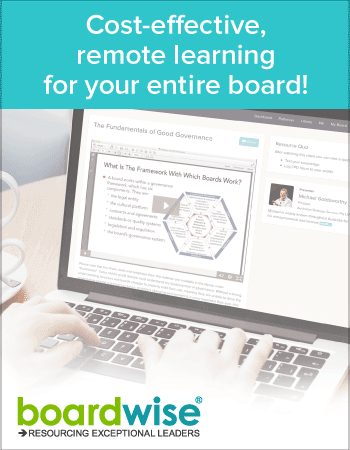Three Ingredients for Meetings: Agendas, Minutes and Follow up Actions
-
governance
Governance Three Ingredients for Meetings: Agendas, Minutes and Follow up Actions
There are three key ingredients for any successful meeting:
- There must be a realistic Agenda (list of topics or matters to be covered)
- There must be a record the issues discussed and the decisions made in the Minutes
- There must be a list and delegation of Follow up Actions
People from all walks of life find their way on to Boards and Committees. There are tens of thousands of sporting clubs, school councils, church groups and non-profit social groups in Australia, and each one of them requires a Committee or Board to oversee their management. There is a growing need for a simple step-by-step guide for those who might not be sure of their rights and responsibilities as a Committee or Board member.
Take mother of two and country town Mum, Jasmine Schiel, who finds herself on the Committee of her 14-year-old daughter’s netball team. Never having been on a Board or Committee before, she is understandably nervous about what she can say or do. Can she raise issues that have concerned her? How does an Agenda work? Will every word she says be recorded in the Minutes? What is the role of the Chairperson and what is Jasmine’s role?
Every meeting has to have three elements:
Agenda
There need to be reasons to meet, particular things need to be discussed and sorted out. Most meetings, therefore, write down and agree on what topics are to be covered. This gives the meeting a structure and agreed purpose, and it also ensures that the meeting doesn’t go forever on one hand, and that important topics don’t get missed out on the other.
A well thought-out Agenda will help make the meeting a smooth one. Don’t crowd the Agenda with too many items, and try not to leave difficult topics to the last; members get tired by the end and either delay a resolution or push one through that requires more consideration.
Minutes
It’s very important to write down (record) the matters discussed and agreed upon, or not agreed upon, at the meeting. This ensures things aren’t forgotten and that the range of matters raised are stored for future reference if required.
Interestingly, Minutes are the first things future historians might look at if they are writing the history of a particular enterprise or activity. Minutes give an insight to the topical issues of the day. Minutes also record the follow up actions arising out of a meeting. The Minutes need to record all decisions taken by the Committee or Board as a minimum. Every Agenda item should also record the general direction of the discussion that took place. Sometimes Minute-takers, in their enthusiasm to be thorough, write down who said what, and the Minutes can read like a mini novel. This isn’t necessary. Rather the Minutes should reflect the broad direction of a discussion with the key issues covered being recorded.
Sometimes a particular member may wish to have their comment recorded, particularly if they have an alternative view to that of the group, which is perfectly acceptable.
Follow up actions
Without Follow up actions, a meeting is just people talking. Talking alone isn’t a bad thing, as it can often help meeting participants clarify their own thinking on a particular matter. But if a Committee or Board does little else then perhaps there is too much talking and not enough action.
The Board Portal at OurCatHerder.com helps the most casual (and experienced) meeting attendee follow these three essential ingredients.
OurCatHerder has built-in functions helping everyone stay on the Agenda, write the Minutes and monitor all Follow-up Actions.



